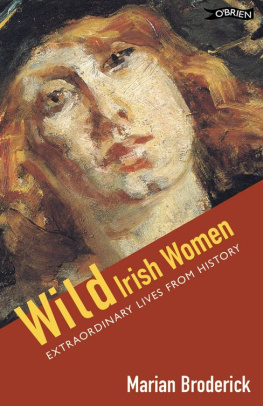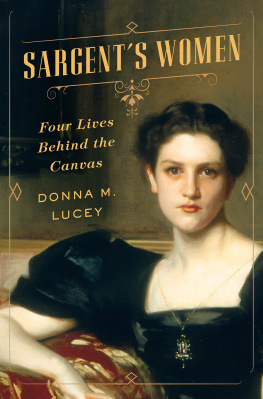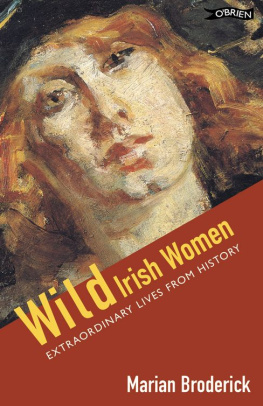Rupert Sargent Holland, Kate Dickinson Sweetser, Rebecca Deming Moore
The Lives & Legacy of Extraordinary Women
Joan of Arc, Catherine the Great, Pocahontas, Saint Catherine, Florence Nightingale, Helen Keller, Elizabeth Cady Stanton, Cleopatra, Louisa M. Alcott
Books
OK Publishing, 2020
Tous droits rservs.
EAN 4064066395483
SAINT CATHERINE
The Girl of Siena: 13471380
The old Italian city of Siena lies upon three hills, on one of which gleams the great white Cathedral, and on another perches the scarcely less commanding Church of San Domenico. In the fourteenth century underwood and hanging gardens crept up the sides of these hills, with only a narrow winding road to lead from one part of the city to another. The valley lying between the two hills that were crowned with churches was known as the Valle Piatta, and a little way up one slope stood the small stone-built house of a dyer named Giacomo Benincasa. On the opposite hillside lived his married daughter Bonaventura, and Giacomo's wife often sent her two youngest children, Stephen and Catherine, through the valley on errands to their sister's house. Their message to Bonaventura safely delivered the children were free to play in the valley or pick flowers or rest by the roadside as long as they chose.
One summer afternoon Catherine, who was a small girl with dark hair and eyes, felt drowsy with the warm airs of the lowlands and loitered behind her brother as they were returning from Bonaventura's. He went on, humming a tune of the goatherds. She, stopping under a tree for shade, looked down a little path that led to a fountain called the Fontebranda, where most of the people of Siena got their water. Then she looked up across the hillsides of vineyards and hanging gardens to the cliff where the Church of San Domenico shone very white in the brilliant sunlight. She looked, and rubbed her eyes, and looked again. Then her amazement vanished and she simply stood still, rapt in a kind of ecstasy, which would not permit her to doubt what she saw nor turn her eyes away.
As she stood there entranced, she saw a great throne set upon the very roof of the Church of San Domenico, and on that throne sat the Christ and about Him were grouped the figures of many saints. As she looked the figure on the throne stretched out His right hand and made the sign of the cross over her, as she had seen the Bishop do when he gave his people his blessing. The eyes of the other saints were fixed upon her as though they had a special interest in her, and in turn each of them made her the sign of blessing. The vision held her spellbound, and although people on foot and in wagons passed along the road near where she stood, she did not turn nor pay any attention to them. She seemed to have forgotten everything except the vision high up on the hill.
Stephen had gone on along the road, thinking that his sister was following. After a time he spoke to her, but received no answer. Then he turned around and to his surprise found she was not in sight. He walked back until he caught sight of her standing beneath the tree. "Catherine!" he called. She made no reply. He could not understand why she stood so still, gazing steadily up into the sky. He went nearer, and spoke again. She did not answer, so he took her hand and said, "Tell me, Catherine, what are you doing? Why do you stop here?"
The girl moved, and slowly turned her head, as though she had just been waked from a sound sleep. "Oh, Stephen, if you had but seen what I saw, you wouldn't have disturbed me so," she said slowly. Again she looked up to the Church of San Domenico, but now the vision was gone, and there were only the white walls gleaming in the sunshine.
"What was it, Catherine? Please tell me," begged Stephen.
"Nay, I cannot. 'Tis a secret," she answered. In spite of his pleading and his curiosity she would not tell him. Shaking her head at all his questions she went up the road with him to their father's house.
Supper caused Stephen to forget his sister's strange actions, but it had no such effect on the little girl herself. She felt that she would never forget the miracle, and as soon as she was alone she tried to remember exactly how the vision had looked to her. She found that she could recall it, and she loved to do so, and to wonder what was its message.
In that age the Church and wars occupied much of the people's minds, and little Catherine was already familiar with the stories of many of the saints and of the customs and manners of the Church. Her father was a well-known and respected citizen of Siena, a prosperous man, but in no way especially religious. Her mother had been too much occupied with caring for her large family to give much thought to the Church. So Catherine decided that neither of them would understand her vision, and determined to keep it a secret. But she thought over it much of the time until she finally decided that it meant she was to lead a different sort of life from that of her brothers and sisters and playmates. Thereupon she began to wonder what it was best for her to do.
Her first desire was to leave the bustling turbulent city of Siena and seek out some place in the wilderness where she might be alone and live like the ancient hermits. She planned how she would go, and early one morning set out, prudently carrying a loaf of bread in a bag under her arm. She went down through the Valle Piatta and past her sister's house until she came to one of the city gates. She had never been outside the walls of Siena before, and she hesitated as she stood there, thinking of the wild and unprotected country that lay beyond. But Catherine was brave, and she hesitated only a moment, and then went through the gate and out into the country.
At that time there were bandits and robbers and troops of marauding soldiers all through the hills and valleys of Italy, and people rarely ventured beyond the city walls. Catherine, however, held to the road, passing an occasional solitary house where some goat-herd or farmer lived. At last a brook tempted her to leave the highway and follow along its course, and in time it brought her to a cave made by a shelving rock that came close down to the bank of the stream. This seemed just the place for a hermit's home, and she went into the cave and fell upon her knees to give thanks that she had been brought safely to this refuge. Again she fell into a trance, as she had done on the day when she saw the vision. She thought she heard voices which told her that though she was to lead a different life from her friends she must do her work among people and not alone in the wilderness, and bade her go home before her father and mother should think she was lost.
When she had heard this counsel Catherine rose and went out of the cave. She looked back along the path by which she had come; it seemed a long way home to Siena and she felt tired and warm. She sat down on the bank of the brook and ate some of the bread she had brought with her and then fell asleep. When she woke she was rested, and jumping up hurried back to the road so that she might reach the gate by sunset. She came to the city walls in time to pass through the gate just before the guard closed it for the night, and went straight on to her father's house. Fortunately her parents had not been worried by her absence, supposing she had been spending the day at her sister's.













